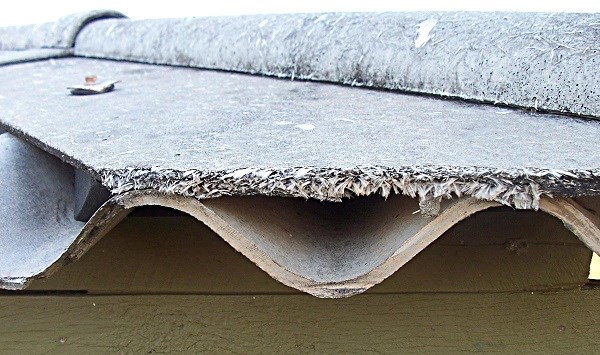We all know that breathing in asbestos dust can be deadly. But it might surprise you to learn that this potentially dangerous building material is still present in the walls, roofs or floors of nearly one in two Australian homes and despite the 2003 Australia-wide ban on asbestos use and manufacture, two Australians are still diagnosed with incurable mesothelioma cancer every day. Here’s what to do if you suspect the presence of asbestos in your home...
What exactly is asbestos?
It’s a versatile building material that can withstand heat, erosion and decay and is also fire- and water-resistant. Asbestos was an extremely popular building material in Australia between the mid-1940s and mid-1980s (in fact, at this point, Australia was one of the highest users in the world).
What can asbestos exposure do to you?
If broken, cut or drilled, materials containing asbestos can release dangerous particles which, if breathed in, can cause asbestosis, lung cancer or the incurable disease mesothelioma.

Which homes are most likely to be affected?
Any house or apartment built or renovated before 1990 can be affected, whether it’s made of brick, weatherboard or fibro.
Where is asbestos normally found?
Externally, a home may have asbestos cement sheet (ACS) eaves, verandahs, carport ceilings and garage linings, as well as gable and window infills. It can also be found in external walls.
There may also be asbestos in electrical switchboards and cabinets, roofing, gutters, ridging, as well as downpipes, stormwater, toilet and sewage pipes, chimney flues and outbuildings.
Inside the home, you might find asbestos in the kitchen, laundry, bathroom, under and inside flooring, behind and inside wall tiles, splashbacks, and shower.

How can I check if my house has asbestos?
You can’t tell just by looking – you’ll need to enlist the services of a licensed asbestos professional to inspect your property and have your building materials scientifically tested to confirm the presence of asbestos. Do not embark on any DIY renovations in a home built before 1990 without having it inspected by a licensed asbestos professional.
What happens if they find asbestos?
It will need to be removed and disposed of by a licensed asbestos removalist.
Can I dispose of small amounts of asbestos myself?
DIY asbestos removal is not recommended. In fact, in the ACT, self-removal of asbestos is illegal and must be carried out by a licensed professional.
In NSW, a non-licensed person can remove non-friable asbestos as long as the area is no larger than 10 square metres.

What are the insurance implications?
It’s crucial that anyone handling asbestos, whether it’s you or a tradesperson, is fully insured – even if it’s only a small amount of asbestos.
Without insurance, if something goes wrong that causes contamination, you could be liable for hundreds of thousands of dollars in clean-up costs and/or compensation.
My house has asbestos but I don’t plan to move it or renovate – is it safe?
If left alone and undisturbed, materials that contain asbestos pose little risk. Paint it and leave it alone – but remember to check it occasionally for any signs of wear and tear.
DIG IT CIVIL are licensed specialists in asbestos removal and would be happy to help, please contact us for more information.